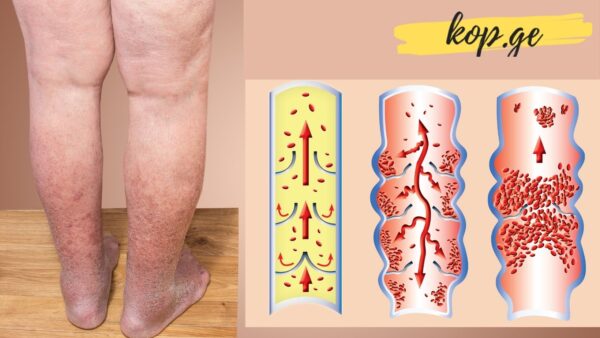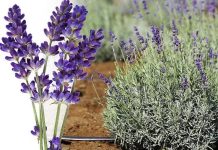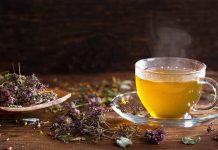Natural Home Remedies That Thin the Blood – Why This Is Truly Important

The human body relies heavily on the circulatory system to deliver oxygen and nutrients to every organ and tissue. At the center of this system is the blood—our life-sustaining fluid. For blood to perform its functions effectively, it needs to maintain the right consistency: not too thick, not too thin. When blood becomes too thick or sticky, it can lead to the formation of blood clots, also known as thrombi, which can severely disrupt circulation and pose life-threatening risks.
The presence of blood clots in arteries or veins is not just a minor issue—it’s a serious health threat. When a clot forms, it can block the normal flow of blood and oxygen to vital organs, such as the brain or the heart, and result in life-altering consequences like stroke, heart attack, or pulmonary embolism.
Arterial clots are particularly dangerous because they can cut off oxygen supply to organs. These clots commonly form in the legs, arms, or brain, and if not treated promptly, they can cause long-term damage or even death.
Recognizing the Symptoms of Blood Clots
Some of the most common signs that may indicate the presence of a blood clot include:
Muscle pain or cramping, often in the legs
Weakness or fatigue without clear reason
Skin discoloration (redness or bluish tone) in the affected area
Coldness in the hands or feet
These symptoms should never be ignored, especially if they appear suddenly or are accompanied by shortness of breath or chest pain. Immediate medical attention is crucial in such cases.
What Increases the Risk of Blood Clots?
Several lifestyle and health-related factors can increase the likelihood of developing blood clots. These include:
High cholesterol levels
High blood pressure (hypertension)
Smoking
Diabetes
Obesity
Prolonged inactivity, such as sitting for long periods or being bedridden
The combination of these factors leads to damaged blood vessels, increased inflammation, and slower blood flow—all of which promote the formation of clots.
How Can We Prevent Stroke and Clot Formation Naturally?
While medications like blood thinners (anticoagulants) are often prescribed to reduce the risk of clot formation, they are not the only solution. Diet and lifestyle changes can be equally effective and, in some cases, even more beneficial in the long term.
Here are some practical and powerful natural ways to help thin the blood and prevent clot formation:
🌿 Top Natural Blood Thinners You Can Add to Your Diet
Garlic – Known for its natural antibiotic and anti-inflammatory properties, garlic improves blood circulation and prevents clotting. It can be consumed raw, cooked, or as a supplement.
Olive Oil – Extra virgin olive oil supports heart health and reduces blood viscosity, especially when used as a replacement for unhealthy fats.
Onions – Rich in antioxidants and natural compounds that reduce platelet aggregation, lowering clot risk.
Tomatoes – Contain natural compounds that help inhibit platelet clumping, especially in fresh form or tomato juice.
Grapes – Packed with flavonoids like kaempferol, quercetin, and myricetin, which act as natural blood thinners and antioxidant protectors of blood vessels.
Vitamin E – This essential nutrient prevents oxidation of cells and improves blood flow. Top sources include:
Avocados
Kiwi
Almonds
Broccoli
Omega-3 Fatty Acids – These essential fats reduce inflammation and platelet activity. Rich sources include:
Fatty fish (like salmon or mackerel)
Walnuts
Pumpkin seeds
Flaxseeds
Turmeric – Its active compound, curcumin, has natural anti-clotting properties and supports liver and heart function.
Ginger – Contains natural salicylates (like aspirin), which help prevent clot formation and support healthy circulation.
Gingko Biloba – This herbal remedy reduces fibrin, a protein involved in clot formation, and improves blood flow to the brain.
Vitamin C – Strengthens blood vessels and prevents damage that could lead to clotting. Sources include:
Oranges
Berries
Bell peppers
Leafy greens
Blueberries – A powerful antioxidant fruit that improves cardiovascular health and supports blood vessel integrity.
Cinnamon – Contains coumarin, a chemical compound with strong anticoagulant effects that also helps reduce blood pressure. Use in moderation.
Cayenne Pepper – High in natural salicylates and capsaicin, cayenne improves blood flow and prevents clumping of blood cells.
Beets – Rich in natural nitrates that improve blood vessel function and reduce clotting tendencies.
Leafy Greens – Vegetables like lettuce, spinach, and broccoli support healthy circulation. (Note: If you’re on prescription blood thinners like warfarin, monitor vitamin K intake.)
Fruits Like Grapefruit, Pineapple, and Pomegranate – Contain enzymes and antioxidants that support blood flow and cardiovascular health.
Dark Chocolate – In moderation, it can improve blood vessel flexibility and reduce clot risk thanks to its flavonoid content.
Nuts – Almonds, pistachios, Brazil nuts, and walnuts provide healthy fats and minerals that support heart and blood vessel health.
Juices and Teas:
Green Tea – Contains catechins that improve heart function and prevent clotting.
Grape Juice – Natural source of antioxidants and flavonoids.
Cranberry Juice – May help thin the blood, especially in combination with a heart-healthy diet.
Pineapple Juice – Contains bromelain, an enzyme known to reduce clotting.
🩺 Lifestyle Habits That Support Healthy Blood Flow
In addition to consuming blood-thinning foods, you should also adopt the following lifestyle habits:
Exercise regularly – At least 30 minutes of walking, yoga, or light cardio daily to improve circulation.
Avoid prolonged sitting – Stand up, stretch, or move every hour, especially during long trips or office work.
Stay hydrated – Dehydration can thicken the blood. Aim for 6–8 glasses of water daily.
Quit smoking – Smoking damages blood vessels and significantly increases clot risk.
Limit alcohol intake – Excessive alcohol disrupts blood composition and liver function.
✅ Final Thoughts
Keeping your blood thin and flowing smoothly is one of the best ways to protect yourself against serious conditions like strokes and heart attacks. While medication can play a role when necessary, nature offers an abundance of effective tools to support your cardiovascular system.
By incorporating natural blood-thinning foods, staying active, and avoiding harmful habits, you give your body the best chance to stay strong, healthy, and protected from the dangers of blood clots.
Your health is in your hands—start with your plate.












